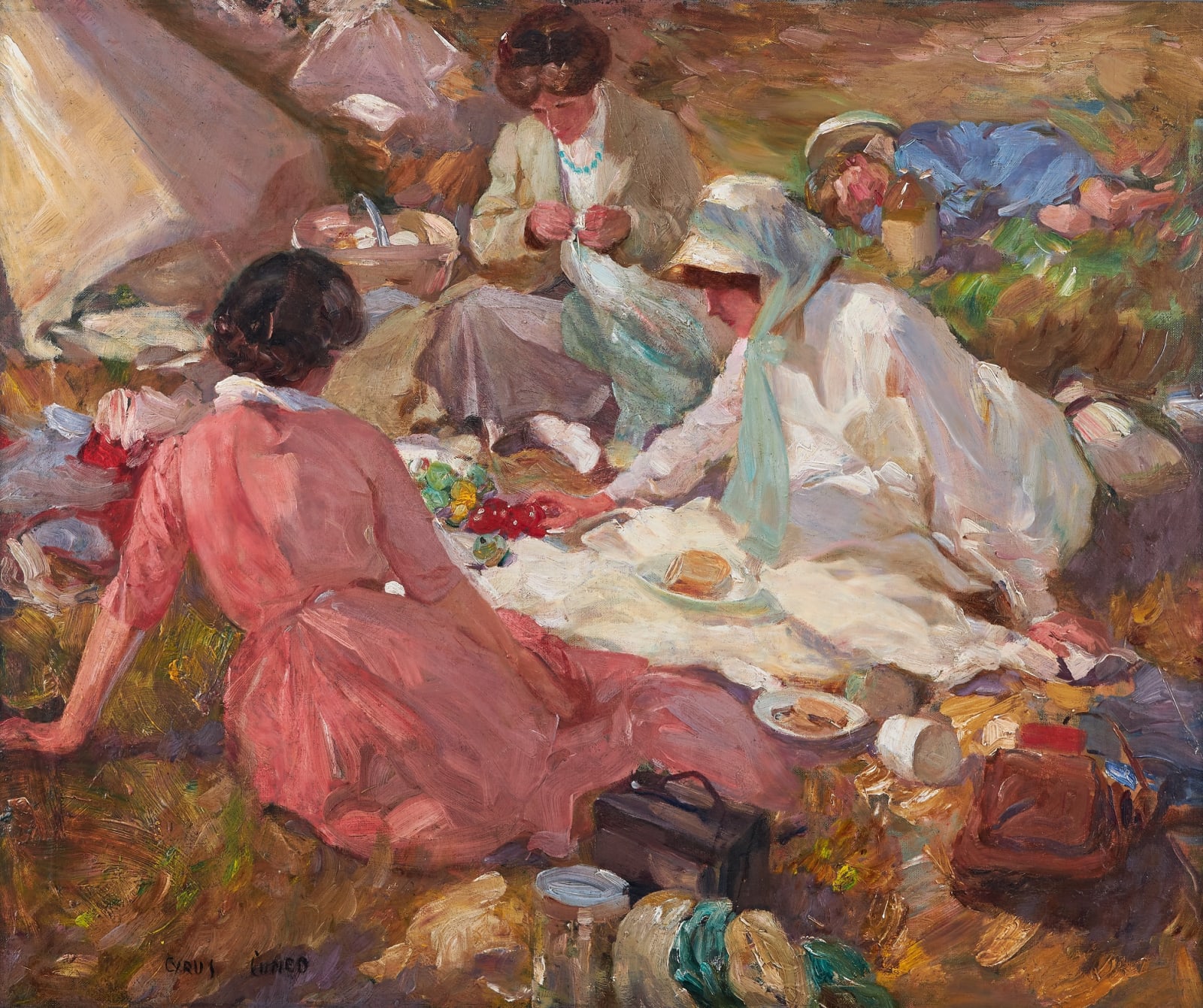Cyrus Cincinato Cuneo, ROI 1879-1916
Provenance
by descent in the family of the artist
Christie’s, London, ‘Victorian and Traditionalist Pictures’, 5 June 2008, lot 1
Exhibitions
Blackheath Art Club, Spring Exhibition, April 1916.
Literature
'Blackheath Art Club: Pictures at Spring Exhibition, A Successful Event', Sevenoaks Chronicle and Kentish Advertiser, 21 April 1916, p. 7
Cyrus Cincinato Cuneo, R.O.I. (1879-1916), also known as Ciro, was an Italian American artist. A man of diverse talents, he was a massier, or head student, when training under James Abbott McNeill Whistler at the Académie Colarossi, a fly-weight boxing champion in his birthplace of San Francisco, and a successful illustrator for many British magazines including the Illustrated London News. In an interview with the Newcastle Journal, published 30 July 1910, he stated:
‘I am a pure-blooded Italian as far as my parentage is concerned; I am a native of ‘Frisco, for I was born there; I am a Parisian as far as my art is concerned, for I learnt nearly everything I know in that city of pleasure; and I am a Londoner because I live here, and like it, and don’t intend to quit’.
This rare example of Cuneo’s work in oil depicts members of his family. His wife and fellow artist Nellie Tenison Cuneo, S.W.A. (1869-1953), whom he first met when they were both training under Whistler, reaches across the picnic; his younger son and future artist Terence Tenison Cuneo, C.V.O., O.B.E., R.G.I, F.G.R.A. (1907-1996) lounges on the grass; and the boy’s aunts sit around the blanket. An article on the Spring Exhibition at Blackheath in the Sevenoaks Chronicle and Kentish Advertiser, 21 April 1916, refers to this picture: ‘A new exhibitor at Blackheath, Mr Cyrus Cuneo, R.O.I., is represented in a group of holiday makers, entitled, ‘The Picnic’’. This renders The picnic one of the final paintings completed and exhibited by Cuneo as he died suddenly in July 1916 at the age of 37, succumbing to blood poisoning after he was accidentally scratched by a hat pin during a dance.
The painting displays the influence of French Impressionism in both its subject matter and style, recalling Monet’s paintings of his own young family in the garden and his unfinished Le Déjeuner sur l'herbe (1865-66) (Musée d'Orsay). An intimate, peaceful, and candid depiction of everyday life, it communicates ease and comfort not only in the unintrusive nature of the composition but in the artist’s swift application of paint with a wide brush. The result is a masterful utilisation of both form and colour, the loose rendering of the fabric of the women’s dresses reminiscent of the confident brushstrokes of Whistler’s Harmony in Pink and Grey: Portrait of Lady Meux (1881-2) (The Frick Collection). Having moved to London to marry Nellie at the age of 25, a city which he described as ‘the Hub of the Universe’, Cuneo must also have been aware of British Impressionist artists such as Sir George Clausen R.A. and Stanhope Forbes R.A., as well as the cosmopolitan American expatriate John Singer Sargent, all of whom demonstrated the influence and adaptability of Impressionist techniques at the turn of the century.
Cuneo’s son, Terence, would have been eight years old in The picnic. Following in his father's footsteps, he went on to become a successful artist depicting diverse subjects including horses, railways, and military actions. During the Second World War he was commissioned by the Foreign Office to produce anti-Nazi drawings and cartoons and in 1953 he was the official artist for the Coronation of Elizabeth II.
We are grateful to Carole Cuneo for her assistance in cataloguing this work.
Bibliography:
A.B. Cooper, 'A Black and White Artist: Interview with Cyrus Cuneo', Newcastle Journal, 30 July 1910, p. 4
